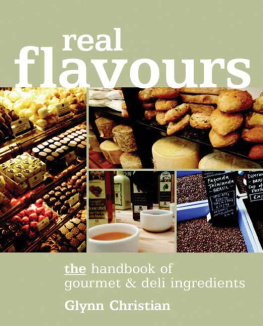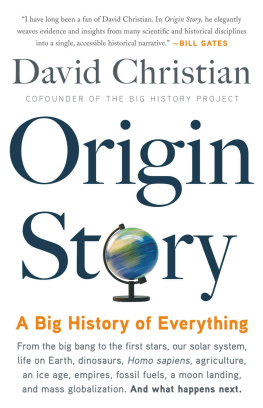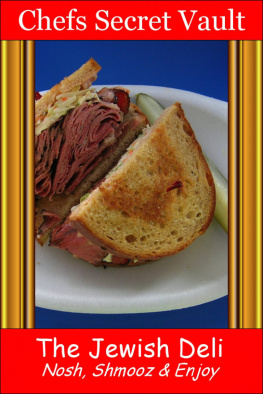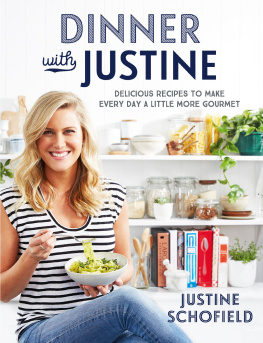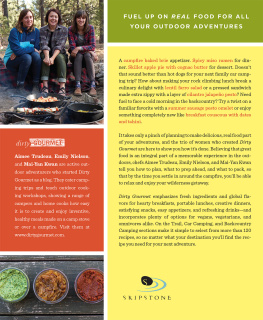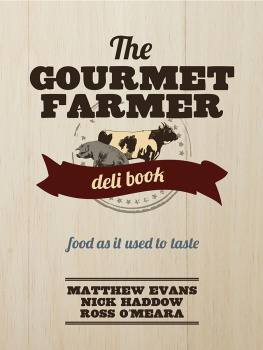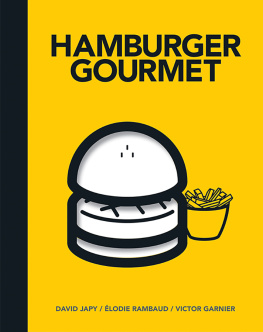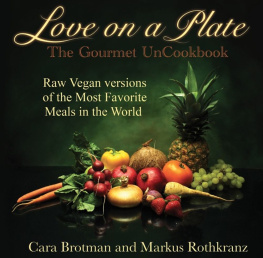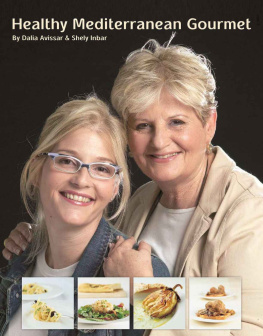Christian - Real flavours: the handbook of gourmet & deli ingredients
Here you can read online Christian - Real flavours: the handbook of gourmet & deli ingredients full text of the book (entire story) in english for free. Download pdf and epub, get meaning, cover and reviews about this ebook. City: London, year: 2005;2008, publisher: Grub Street Cookery, genre: Home and family. Description of the work, (preface) as well as reviews are available. Best literature library LitArk.com created for fans of good reading and offers a wide selection of genres:
Romance novel
Science fiction
Adventure
Detective
Science
History
Home and family
Prose
Art
Politics
Computer
Non-fiction
Religion
Business
Children
Humor
Choose a favorite category and find really read worthwhile books. Enjoy immersion in the world of imagination, feel the emotions of the characters or learn something new for yourself, make an fascinating discovery.
- Book:Real flavours: the handbook of gourmet & deli ingredients
- Author:
- Publisher:Grub Street Cookery
- Genre:
- Year:2005;2008
- City:London
- Rating:4 / 5
- Favourites:Add to favourites
- Your mark:
- 80
- 1
- 2
- 3
- 4
- 5
Real flavours: the handbook of gourmet & deli ingredients: summary, description and annotation
We offer to read an annotation, description, summary or preface (depends on what the author of the book "Real flavours: the handbook of gourmet & deli ingredients" wrote himself). If you haven't found the necessary information about the book — write in the comments, we will try to find it.
Real flavours: the handbook of gourmet & deli ingredients — read online for free the complete book (whole text) full work
Below is the text of the book, divided by pages. System saving the place of the last page read, allows you to conveniently read the book "Real flavours: the handbook of gourmet & deli ingredients" online for free, without having to search again every time where you left off. Put a bookmark, and you can go to the page where you finished reading at any time.
Font size:
Interval:
Bookmark:

Acknowledgements
Thousands of people and experiences helped write this book originally, and with each new edition thousands more might find nuggets they have given me are now in print. Thanks for all those conversations and observations, for the advice generously given and the opinions passionately imposed.
Many of those who helped with the first edition are still helping, particularly Richard Broome in London, Kurt Weyrauch in New York, and Fr Anthony Parker in Baltimore, to whom Topher and Audra Russo must now be gratefully added. In Australasia the ever-curious Chris Beech made me think more deeply, Professor Laurie Melton enthused, John Prince and his magical garden and mind did both, Noelene Gillies and her unfailing hospitality kept me going, Peter Howards ever-willing generosity was unwitting fuel: Jacqui, Phil and John of Sabato in Auckland still run one of the best speciality food shops in the world, as generous-spirited as they are.
In London, Maria Jose Sevilla of Food from Spain was quick off the mark to help yet again, and there was great speciality from Fabrizio Di Clemente and his colleagues at the Italian Trade Centre, and from Catherine Manach of Sopexa (Food from France).
Bob Farrand, publisher of Fine Food magazine and Supremo of speciality food fairs, the Great Taste Awards, the UK Cheese Guild and the World Cheese Awards, was a brick, delightfully cemented into place by Linda, his equally kind and knowledgeable wife. Mark Steene of The Seasoned Pioneers generously shared amazing information, as did Ian Hemphill, author of the extraordinary Spice Notes . Jenni Muir, author of award-winning A Cooks Guide to Grains let me into more grain secrets than I had imagined possible, and good old and new friends supported the research, the eating and the arguing that made the book such fun to bring up to date, especially Robin, Louella and Merlin Hanbury Tenison, Richard Patching, Carolyn Cavele, Rosie Stark, Michael Truscott, Kitty van Hagen, George and Anne Andrews, Dinah Morrison, Mattie Wall and Rehan Kularatne.
Nothing would have been possible if my family in NZ had not supported me through some difficult times, especially Dale big thanks also to Bruce, Faye, Ross and Sheryl, Matt, Jared and Alicja, Natalia and Daniel, who did more than he imagines. Most of all a book like this needs a publisher and an editor who profoundly understands food writing and food writers; in Anne Dolamore I am blessed with both.

These most ancient of foods, cheap and nourishing, are sadly still looked upon with suspicion in the UK, particularly by the hard-up; those in fact who would most benefit from them. Earnest perpetrators of characterless lentil rissoles have only themselves to blame for the failure of their regimen to grip our imaginations. If only they could be as original with these foods as they are with their clothes.
The other oft-heard complaint against beans is wind. This is a very real and at times painful problem for many people, but sound knowledge will sort it out in most cases. First concentrate on the thin-skinned varieties of pulses, which cook faster, as they cause fewer side effects. Then, although lentils cook well and fast without the added bother of soaking, you do reduce windcausing content by always soaking, rinsing and parboiling before cooking in yet more fresh water.
The wind problems will not always be lesser, but if you introduce these products to your diet slowly, as side dishes rather than main courses, you will find the bowel will adjust and in a month or so without it going or blowing against the grain.
In just a few weeks you will be able to enjoy a red kidney bean stew or a chickpea salad with barely a grumble. Thus with a little care and patience when you begin it is possible to eat spectacularly well as a vegetarian, almost thoughtlessly obtaining the high fibre, low fat, low sugar ideals of modern nutritional theory. Milk, cheese or eggs each day, or some soy product, or a proper mixture of grains and pulses and you are safe and very well indeed.
Beans, peas and pulses are excellent sources of protein and carbohydrate but are not as balanced as animal protein, including eggs, milk and cheese. This does not matter if your diet includes such animal protein but ovo-lactarian vegetarians, who eschew everything from an animal source, should take care to balance the imbalance by also eating grains, done without thought if you pour a lentil dhal onto rice, eat baked beans on toast or scoop up hummus with pitta bread.
None of these ingredients has a fat content but its difficult to find enjoyable recipes that do not add it in some form. They also have plenty of dietary fibre, and this is most important to those of us getting old, when a general trend towards eating soft food means it might take several days to pass through the alimentary canal, something that exacerbates any illness and contributes to general ill-health, too. Even small amounts of beans, peas, pulses or grains in the diet can make a major difference to the health of the elderly and is a good habit to start young, too.
You could cook these ingredients a different way every day, but I generally end up cooking them the same way with tomato, lots of garlic, fresh herbs in a bundle and plenty of fat: bacon, olive oil, duck or goose fat. Butter is good but not as good as the less sweet fats and oils.
Often much of the fat, pork and garlic will come largely from chunks of something like Polish boiling sausage q.v. But be brave with peas, beans and lentils. With chickpeas, use cumin and coriander and tomato paste and olive oil when they are warm just enough tomato paste to bind them together and serve sprinkled with chopped chives as a salad. But not for me, as I never serve or eat chives because of their dominating onion flavour: Id sprinkle the chickpeas with toasted cumin seeds. Serve cold tuna fish with cannellini in vinaigrette as a starter. Mix leftover butter beans with chilled orange slices, black olives and segmented tomato. See how easy it is?
To make a succulent sauce for any hot beans, take up to a quarter of cooked ones from the saucepan, add water, stock or tomato pure to them and cook to a mush or pure them. Return to the drained beans and cook on. A real chili should have a sauce of softened pure-like beans like this. Beans in their own sauce are excellent hot or cold, and reheat well, too witness the famous refritos of Mexican and Tex-Mex cooking.
Whenever a bean recipe fails to excite you, and you have added enough salt and extra fat and more garlic, then add red wine vinegar teaspoon by teaspoon. Or sherry or Chinese or balsamic vinegars, of course. The difference will be wondrous, and fast.
Neither should you overlook the flavouring possibilities of oil. Olive oil is almost de rigueur unless you have very fatty bacon or a tin of goose fat. But beans cooked simply with tomatoes and then finished with a splash of walnut oil make a superb accompaniment to poultry and, after sitting in a refrigerator overnight, the most memorable cold salad. Better with garlic, it goes without saying.
Lamb, especially the cheaper fattier cuts, goes well with beans. I like to cook neck of lamb in tomato with garlic sausage and some fresh thyme, then to add in cooked haricot or butter beans and cook on for enough time to allow some of the beans to melt into the sauce and absorb the fat. Just put the pot on the table and let your family and friends help themselves.
For all I have said about the boring way these foods are generally seen, nothing can quite equal the feverish grip with which lentils hold our great chefs in thrall. From something to sneer at, lentils have become an essential accompaniment. Their affinity with fish is the most surprising discovery, but pigeon and every type of bird now seem naked without them and even aristocratic beef is served with lentils perfumed with herbs and glistening with pork fat.
Next pageFont size:
Interval:
Bookmark:
Similar books «Real flavours: the handbook of gourmet & deli ingredients»
Look at similar books to Real flavours: the handbook of gourmet & deli ingredients. We have selected literature similar in name and meaning in the hope of providing readers with more options to find new, interesting, not yet read works.
Discussion, reviews of the book Real flavours: the handbook of gourmet & deli ingredients and just readers' own opinions. Leave your comments, write what you think about the work, its meaning or the main characters. Specify what exactly you liked and what you didn't like, and why you think so.

